Urban microclimate modification and management, including the urban heat island effect, and air pollution patterns and its management
Urban microclimate refers to a set of atmospheric conditions that differ from the climate of the surrounding area. It is could be a small area or a large piece of land.
Urban area are perhaps the most complex of all microclimates. With over 75% of the British population being classed as urban, it is no surprise that they are also the most heavily studied by students of geography and meteorology. Therefore, the rest of these notes focus on the various elements that constitute an urban microclimate.
Source: Royal Metropolitan Society
Processes/causes of urban microclimates
- Sunshine and Radiation – as a result of the concrete surfaces and tarred roads in most cities, the sun’s energy is reflected back to space a long-wave radiation. This increase the temperature of the surrounding area.
- Precipitation – high rainfall in a given area can generally reduce the temperature of the surrounding, particular during hot summers evenings
- Temperatures – heating, due to fuel combustion from factories, lorries, can significantly increase the temperature of a given area
- Pressure and winds – causing land and sea breezes can alter the temperature of the surrounding area.
- Cloud – thick clouds can reduce the temperature of a given area, especially during the rainy season.
Urban heat islands(UHIs)
An urban heat island, or UHI, is a metropolitan area that’s a lot warmer than the rural areas surrounding it. Heat islands occur on the surface and in the atmosphere. On a hot, sunny summer day, the sun can heat dry, exposed urban surfaces, such as roofs and pavement, to temperatures 50–90°F (27–50°C) hotter than the air, while shaded or moist surfaces—often in more rural surroundings—remain close to air temperatures. Surface urban heat islands are typically present day and night, but tend to be strongest during the day when the sun is shining.
In contrast, atmospheric urban heat islands are often weak during the late morning and throughout the day and become more pronounced after sunset due to the slow release of heat from urban infrastructure. The annual mean air temperature of a city with 1 million people or more can be 1.8–5.4°F (1–3°C) warmer than its surroundings. On a clear, calm night, however, the temperature difference can be as much as 22°F (12°C). (www.drishtiias.com)
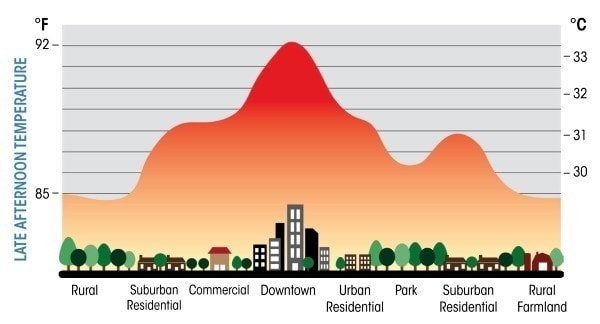
Source:Resilientwest.org
Causes of Urban Heat Islands:
a) Anthropogenic heat release – Heat derived from industry and domestic central heating radiates from cities. They may include dust from construction sites or deserts blown into cities, smoke and carbon monoxide from wild fires, methane gas from animals etc.
b) The fabric of a city – Heat retaining (non-reflective) and emitting properties of building materials means that they absorb much of the incident radiation, which in turn is released as heat. This is called the albedo effect.
c) The lack of vegetation within towns and cities means that less light is intercepted, less evapotranspiration, thus less vapour is released (which naturally cools air surrounding vegetation).
d) The close arrangement of high-rise buildings from urban street canyons found in most cities also contribute to the trapping of heat energy. The dynamics leading to this process is due to the reduced sky view factor that inhibits the escape of reflected radiation back into the atmosphere, causing the radiation to be absorbed by neighboring structures. (www.drishtiias.com).
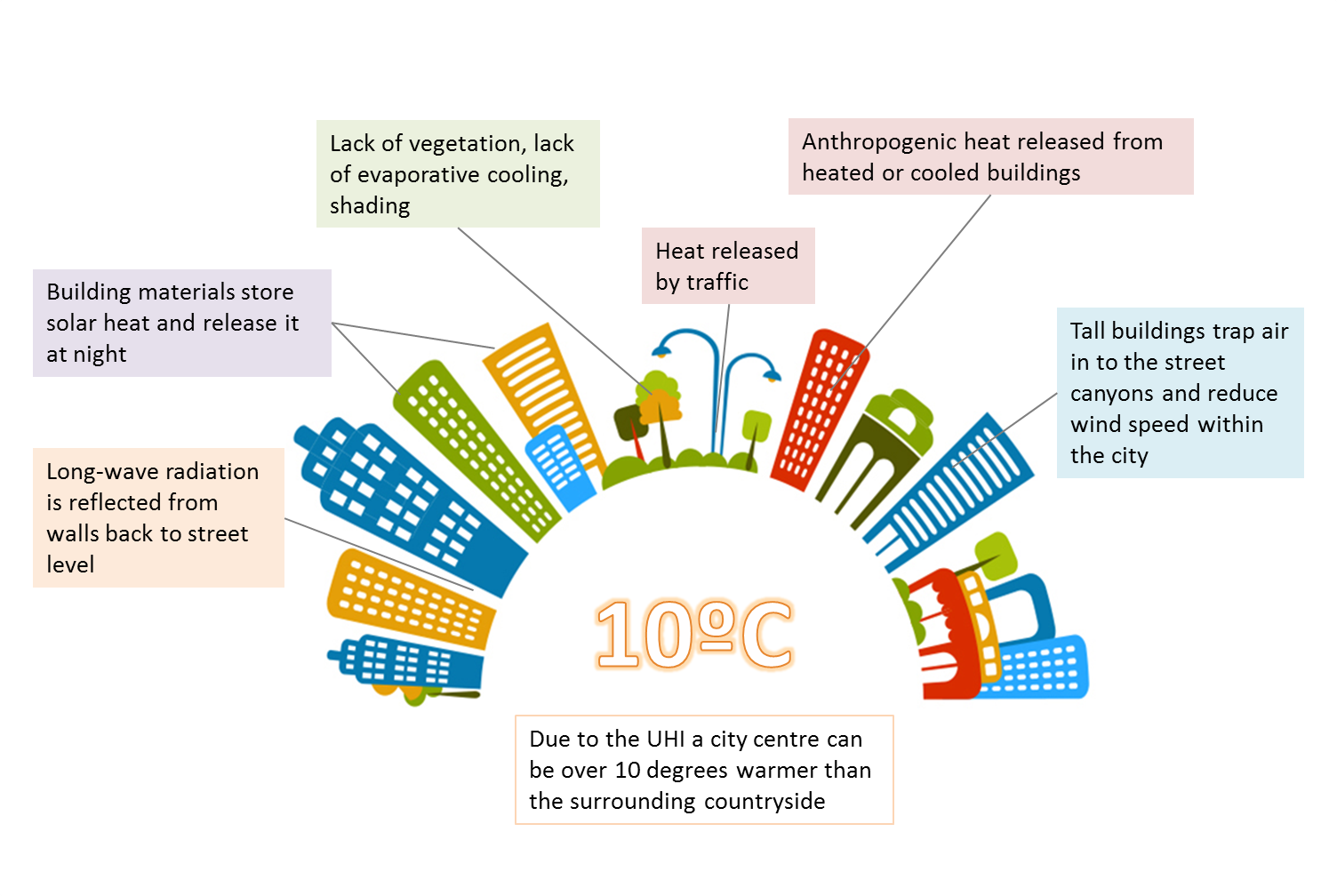
The diagram below shows the causes of UHIsSource:emaze.com
Effects of Urban Heat Islands
Elevated temperature from urban heat islands, particularly during the summer, can affect a community’s environment and quality of life. While some heat island impacts seem positive, such as lengthening the plant-growing season, most impacts are negative and include:
- Increased energy consumption: Higher temperatures in summer increase energy demand for cooling and add pressure to the electricity grid during peak periods of demand. One study estimates that the heat island effect is responsible for 5–10% of peak electricity demand for cooling buildings in cities.
- Elevated emissions of air pollutants and greenhouse gases: Increasing energy demand generally results in greater emissions of air pollutants and greenhouse gas emissions from power plants. Higher air temperatures also promote the formation of ground-level ozone.
- Compromised human health and comfort: Warmer days and nights, along with higher air pollution levels, can contribute to general discomfort, respiratory difficulties, heat cramps and exhaustion, non-fatal heat stroke, and heat-related mortality.
- Impaired water quality: Hot pavement and rooftop surfaces transfer their excess heat to storm water, which then drains into storm sewers and raises water temperatures as it is released into streams, rivers, ponds, and lakes. Rapid temperature changes can be stressful to aquatic ecosystems.
- UHIs spoil water quality: Hot pavement and rooftop surfaces transfer their excess heat to storm water, which then drains into storm sewers and raises water temperatures as it is released into streams, rivers, ponds, and lakes. Additionally, increased urban water body temperatures lead to a decrease in diversity in the water
Source: Copied from U.S. Environmental Protection Agency. 2008. Reducing urban heat islands: Compendium of strategies. Draft. https://www.epa.gov/heat-islands/heat-island-compendium.
Assignment: Suggest ways in which UHIs in most cities can reduced
Air Pollution Patterns

Air pollution can be defined as the emission of harmful substances to the atmosphere. This broad definition therefore encapsulates a number of pollutants, including:
- sulphur dioxide (SO2), – From the burning of fossil fuels, mostly power stations.
- nitrogen oxides (NOx), – Highest levels found close to road traffic or indoor gas cookers.
- ozone (O3), – Caused by chemical reactions between natural, traffic and industrial pollution in strong sunlight.
- particulate matter (small suspended particles of varying sizes), – Solid particles or liquid droplets in the air, primarily from road traffic. When smaller than 2.5 micrometers (that’s 60 times thinner than a human hair), they are known as PM2.5. Larger particles, which could be dirt or dust stirred up from vehicles are known as PM10.
- carbon monoxide (CO) – emitted from factories, lorries, etc
- and volatile organic compounds (VOCs).
- Metals, including lead, arsenic and mercury – Less of a problem in some countries due to controls on emissions. Iron and steel sectors dominate lead emissions, while disposal of treated wood by burning is source of arsenic.
Carbon dioxide (CO2) and other greenhouse gases are not typically considered within this category.
In developing countries, air pollution is a major problem, as most countries do not have strict environmental laws to control the level of air pollution. LICs account for 10% of the world’s vehicular pollution, even though they account for 20% of the world’s cars. India and China are the main pollutants due to the size of their populations and the fast economic development associated with these countries. Also, as a result of poverty and low incomes, most vehicles in LICs are not road-worthy (they are mostly over aged – 10years or more), thus they produce high amounts of sulphur dioxide.
India cities dominate world pollution list
The most polluted cities in the world
In developed countries, however, air pollution is less of a problem due to stringent laws that are meant to reduce the level of air pollution.
Causes of Air pollution
1. Burning of Fossil Fuels: Sulfur dioxide emitted from the combustion of fossil fuels like coal, petroleum and other factory combustibles is one the major cause of air pollution. Smoke emitting from vehicles, including trucks, jeeps, cars, trains, airplanes cause an immense amount of pollution. We rely on them to fulfill our daily basic needs of transportation. But, their overuse is destroying our environment as dangerous gases are polluting the environment. Carbon Monoxide caused by improper or incomplete combustion and generally emitted from vehicles is another major pollutant along with Nitrogen Oxides, that is produced from both natural and man-made processes.
2. Agricultural activities: Ammonia is a very common by-product from agriculture related activities and is one of the most hazardous gases in the atmosphere. Use of insecticides, pesticides and fertilizers in agricultural activities has grown quite a lot. They emit harmful chemicals into the air and can also cause water pollution.
3. Exhaust from factories and industries: Manufacturing industries release a large amount of carbon monoxide, hydrocarbons, organic compounds, and chemicals into the air thereby depleting the quality of air. Manufacturing industries can be found at every corner of the earth and there is no area that has not been affected by it. Petroleum refineries also release hydrocarbons and various other chemicals that pollute the air and also cause land pollution.
4. Mining operations: Mining is a process wherein minerals below the earth are extracted using large equipment. During the process dust and chemicals are released in the air causing massive air pollution. This is one of the reason which is responsible for the deteriorating health conditions of workers and nearby residents.
5. Indoor air pollution: Household cleaning products, painting supplies emit toxic chemicals in the air and cause air pollution. Have you ever noticed that once you paint walls of your house, it creates some sort of smell which makes it literally impossible for you to breathe.
Suspended particulate matter popular by its acronym SPM, is another cause of pollution. Referring to the particles afloat in the air, SPM is usually caused by dust, combustion etc.
Effects of Air pollution
Air pollution has become a major problem in most cities of the world. It is responsible for a number of premature deaths in developed and developing countries. Pollutants including nitrogen dioxide and particulate matter from road traffic and sulphur dioxide, from the burning of fossil fuels, have been linked to suppressed lung growth in children, asthma, heart disease and the onset of type 2 diabetes. The exposure of pregnant women to air pollution has also been found to affect to foetal brain growth.
1. Respiratory and heart problems: The effects of Air pollution are alarming. They are known to create several respiratory and heart conditions along with Cancer, among other threats to the body. Several millions are known to have died due to direct or indirect effects of Air pollution. Children in areas exposed to air pollutants are said to commonly suffer from pneumonia and asthma.
2. Global warming: Another direct effect is the immediate alterations that the world is witnessing due to Global warming. With increased temperatures world-wide, increase in sea levels and melting of ice from colder regions and icebergs, displacement and loss of habitat have already signaled an impending disaster if actions for preservation and normalization aren’t undertaken soon.
3. Acid Rain: Harmful gases like nitrogen oxides and sulfur oxides are released into the atmosphere during the burning of fossil fuels. When it rains, the water droplets combines with these air pollutants, becomes acidic and then falls on the ground in the form of acid rain. Acid rain can cause great damage to human, animals and crops.
4. Eutrophication: Eutrophication is a condition where high amount of nitrogen present in some pollutants gets developed on sea’s surface and turns itself into algae and adversely affect fish, plants and animal species. The green colored algae that is present on lakes and ponds is due to presence of this chemical only.
5. Effect on Wildlife: Just like humans, animals also face some devastating effects of air pollution. Toxic chemicals present in the air can force wildlife species to move to new place and change their habitat. The toxic pollutants deposit over the surface of the water and can also affect sea animals.
6. Depletion of Ozone layer: Ozone exists in earth’s stratosphere and is responsible for protecting humans from harmful ultraviolet (UV) rays. Earth’s ozone layer is depleting due to the presence of chlorofluorocarbons, hydro chlorofluorocarbons in the atmosphere. As ozone layer will go thin, it will emit harmful rays back on earth and can cause skin and eye related problems. UV rays also have the capability to affect crops.
When you try to study the sources of Air pollution, you enlist a series of activities and interactions that create these pollutants. There are two types of sources that we will take a look at: Natural sources and Man-made sources.
Natural sources of pollution include dust carried by the wind from locations with very little or no green cover, gases released from the body processes of living beings (Carbon dioxide from humans during respiration, Methane from cattle during digestion, Oxygen from plants during Photosynthesis). Smoke from the combustion of various inflammable objects, volcanic eruptions etc along with the emission of polluted gases also make it to the list of Natural sources of Pollution.
While looking at the man-made contributions towards air pollution, smoke again features as a prominent component. The smoke emitted from various forms of combustion like in bio mass, factories, vehicles, furnaces etc. Waste used to create landfills generate methane, that is harmful in several ways. The reactions of certain gases and chemicals also form harmful fumes that can be dangerous to the well-being of living creatures.
Solutions for Air Pollution
1. Use public mode of transportation: Encourage people to use more and more public modes of transportation to reduce pollution. Also, try to make use of car pooling. If you and your colleagues come from the same locality and have same timings you can explore this option to save energy and money.
2. Conserve energy: Switch off fans and lights when you are going out. Large amount of fossil fuels are burnt to produce electricity. You can save the environment from degradation by reducing the amount of fossil fuels to be burned.
3. Understand the concept of Reduce, Reuse and Recycle: Do not throw away items that are of no use to you. In-fact reuse them for some other purpose. For e.g. you can use old jars to store cereals or pulses.
4. Emphasis on clean energy resources: Clean energy technologies like solar, wind and geothermal are on high these days. Governments of various countries have been providing grants to consumers who are interested in installing solar panels for their home. This will go a long way to curb air pollution.
5. Use energy-efficient devices: CFL lights consume less electricity as against their counterparts. They live longer, consume less electricity, lower electricity bills and also help you to reduce pollution by consuming less energy.
Several attempts are being made world-wide on a personal, industrial and governmental levels to curb the intensity at which Air Pollution is rising and regain a balance as far as the proportions of the foundation gases are concerned. This is a direct attempt at slacking Global warming. We are seeing a series of innovations and experiments aimed at alternate and unconventional options to reduce pollutants. Air Pollution is one of the larger mirrors of man’s follies, and a challenge we need to overcome to see a tomorrow.

Source: Ourworldindata
Air pollution infographics:

Case study of air pollution in one city and its varying impact on people
Read on Managing Air Pollution in Mexico City in Geography Course Companion, Page 366-377
Traffic congestion patterns, trends and impacts:
Traffic congestion, in simple terms, is the manner in which vehicular movement in impeded by other vehicles due to limited space. This creates gridlock in some cases, resulting in an increase in travel time, high levels of air pollution and other associated urban stress.
Patterns of traffic congestion
Generally, the traffic congestion varies according to:
1. Time of the day – in most urban areas traffic congestion is usually between 7am – 9am and 5pm to 7pm. These are the time commuters travel to and from work/school etc.
2. day of the week – Mondays and Fridays area usually busiest days of the week, thus characterised by traffic congestion in most cities.
3. week of the month – The first and last weeks of the month are periods when people have received their monthly salaries and are more likely to travel or do business during such periods.
4. Month of the year – December and January are also characterized by heavy vehicular traffic because of Christmas and end-of-year preparations, which may spillover to the following month
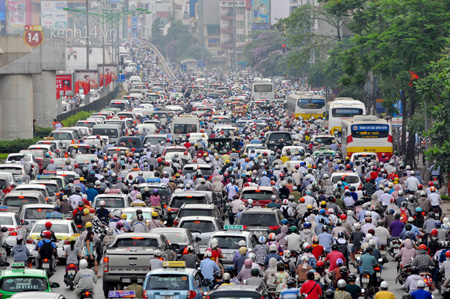
Impacts of traffic congestion
- Counter-urbanization – Urban traffic congestion is a major cause of pollution. To escape this problem, the affluent people migrate to out-of-town locations in the rural urban fringe.
- High levels of air, noise and visual pollution – traffic jams leads to emission of high amount of CO2, sulpher dioxide and carbon monoxide, thereby causing air pollution and ultimately leading to global warming
- Traffic congestion is also associated with high blood pressure, heart diseases as well as sleep disorders
- Delays – this causes lateness to work and other functions, hence it reduces the length of time people can work in a day. This could also lead to loss of productivity, as workers report to work late and goods are not delivered to their destination on time
- Increases travel cost – this could be the result of using alternative routes to get to a destination which could be longer, hence increasing the cost of travel. Delays in traffic could increase cost especially when using timed taxis, such as Uber etc or more money is spent on fuel as a result of fuel wastage resulting from traffic congestion.
- Discourages investors from investing in the city
- Wear and tear of vehicles
- Road rage. Drivers may get angry at one another which may result in verbal exchanges or fist fight, leading to death or injuries
How can traffic congestion be solved
- Congestion charge in London – commuters are made to pay a fee before they can drive to the city center
- Hoy No circula in Mexico city. – Car-free days have been introduced to reduce the level of pollution in the city
- Alternating the use of cars with odd and even registration numbers. In countries such as India and Nigeria, some days in the week are dedicated to the use of cars whose last digit of their car’s registration ends with an even or odd number.
- Improving road infrastructure through the construction of flyovers, railways (underground and overheard), etc
- Encouraging the use of bikes – such as in the Netherlands and the UK. These days bike sharing companies have become popular in most cities suffering from traffic congestion. Uber has start a bike hiring service.
- Mass transit services
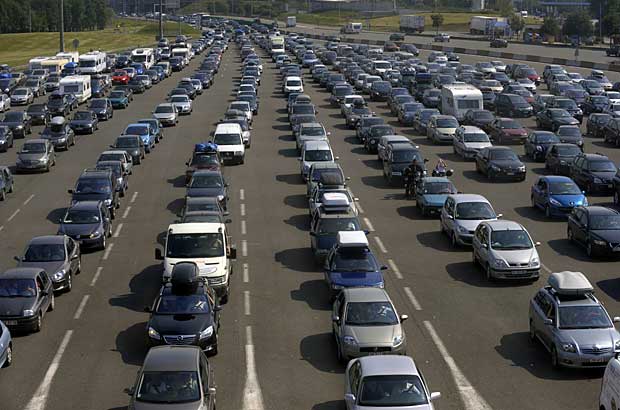
Case study: Sustainable city management in Curitiba, Brazil
Contested Land
Contested lands are lands that have the potential to attract a wide array of interests from different stakeholders in business, housing, politics or otherwise. Lands in most cities have various uses depending its ownership. For example, a parcel of land close to the CBD could be seen by an entrepreneur as a good place to invest in retail or office building. At the same time, the government might view such land as good location for a multipurpose car park or entertainment center. This often generates a lot interest on the land, thus making it a contested land.
Contested lands can often result in
a. Conflicts – where different stakeholder make every effort, both legal and illegal, to own high-value lands.
b. Relocation of the poor – when poor people live on contested lands in the urban areas, they may end up losing the land to various groups of people with varied interests on such land. They may have to sell the land and relocate to other parts of the city or clear the slum to make way for urban redevelopment.
c. It may lead to resentment from urban dwellers, especially when those living to contested lands are dissatisfied with an ongoing project or facility located on the land. For example, an urban green space could be depleted to make way for the construction of a stadium. Though for the purpose of leisure, the people in the are might resent this decision, as it may lead to noise pollution and traffic congestion.
Case studies of contested lands:
- Mediaspree, Berlin, Germany (page 97/8) Urban Environments by Stephen Codrington
- Slum clearance Rio de Janeiro (Page 368) Geography Course Companion
Managing the impacts of urban social deprivation, including the cycle of deprivation and geographic patterns of crime
Urban Social deprivation
Urban Social deprivation – is when people in urban areas lack or have limited access to social services such as housing, education, health services, roads, sewerage or drainage facilities. This may change over time and from one place to another, depending on the effort made by the individual, government of non-governmental organization.
Social exclusion (a product of social deprivation), which is when a member in a particular society is ostracized by other members of the society. The excluded member is denied access to jobs, social supports or peer networks, exclusion from services, and negative attitude of the local neighborhood, leading to poverty.
The cycle of social deprivation is “what happens when people or areas suffer from a combination of linked problems such as unemployment, poor skills, low incomes, poor housing, crime, bad health and family breakdown.”(Oxfordshire County Council). These problems are linked and can combine to perpetuate the cycle of social deprivation.
Examples of people or groups suffering from social deprivation include young people, older people, disabled people, people of ethnic minority communities, asylum seekers, people living in deprived urban areas (e.g slums), people living in isolated rural areas etc.
The cycle of deprivation
The cycle of deprivation also relates to the cycle of poverty, which was studied the variety of urban environments under this topic. It involves a continuous process of transmitting trans-generational poverty or social deprivation, and the challenge of breaking away from the cycle. The cycle of deprivation is shown in the diagram below:

It begins when children born in disadvantaged homes (with little or no access to basic services) attend disadvantaged schools, leading to poor academic attainment, unemployment or underemployment and ultimately economic deprivation. This could further result in low incomes, low standards of living, poor housing in a poor neighborhood, poor health among the household members, thus perpetuating the cycle from one generation to the other. It is extremely difficult to break from such a cycle without education, however in most urban areas, the deprived communities lack good quality education.
Indicators of deprivation
• Economic indicators: Access to employment, levels of income of families
• Social indicators: Crime, levels of health and access to health care, proportion of lone-parent families, incidence of crime, vandalism, graffiti, lack of one or more basic amenities, overcrowding, no central heating
• Environmental indicators: level of air, water, noise and land pollution, derelict land
• Political indicators: opportunity to vote, opportunity to participate in community organization
The Multiple deprivation index
Urban Crime
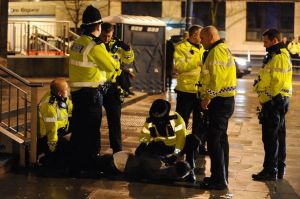
Socially deprived areas are characterized by high crime. Given the characteristics of deprivation outlined above, one would expect that children born into such communities are more likely to engage in crime such as murder, robbery, rape, assault, drug use, etc.
The causes of urban crime in socially deprived communities include:
- Unemployment – in cities where most young adults do not find jobs, they tend to engage in crime
- Inequality – which comes about due to poor income distribution in the city, where the rich get richer whilst the poor get poorer.
- Poor urban infrastructure – poor street lighting, development of squatter settlements, etc
- Inadequate policing –
- Drug and alcohol –
- Inadequate security protection. – no alarm systems or CCTVs

Read more on the causes of urban crime from UN HABITAT
Solutions to urban crime
24 ways to reduce crime in the world’s most violent cities
Case study: Managing Urban Social Deprivation in Barcelona – Read in Geography Course Companion by Garette Nagle. Page 372-3
4 replies on “Urban environmental and social stresses”
Thank you very much for these wonderful information which is really very educative and crucial for my exams . Personally i really appreciate your work for the fact that its of a high quality, yet free for everyone. Thank you very much
LikeLike
Amazing! This blog looks exactly like my old one! It’s on a entirely different subject but it has pretty much the same page layout and design. Outstanding choice of colors!|
LikeLike
Thank you for sharing your thoughts. I truly appreciate your efforts and I am waiting for your next post thanks once again.|
LikeLike
My partner and I stumbled over here from a different page and thought I should check things out. I like what I see so now i’m following you. Look forward to exploring your web page for a second time.|
LikeLiked by 1 person